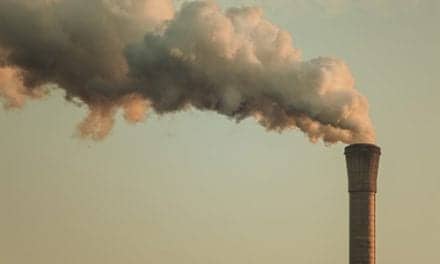On Aug 21, the US Environmental Protection Agency (EPA) announced its decision to wrap its reconsideration of the National Ambient Air Quality Standard for Ozone (NAAQS) into a new, forthcoming review. The move was met with disappointment from leading health organizations, with the American Thoracic Society and the American Lung Association issuing statements expressing their discontent with the EPA’s decision.
According to the EPA, the new review will allow the agency to fully consider the information about the latest ozone science and potential implications for the ozone NAAQS provided by the Clean Air Scientific Advisory Committee (CASAC) and the Ozone Review Panel.
American Lung Association President and CEO Harold Wimmer says in a statement that the new review means the public will now have to “wait years” for a stronger national limit on ozone.
“Finalizing all of these proposed rules quickly—and making them as strong as necessary to protect public health—is more important now than ever. Failing to strengthen the ozone standard means millions of Americans will continue to suffer,” says Wimmer in the statement. “The Clean Air Act requires air that is safe and healthy to breathe. The current ozone standard falls far short of the law’s requirements, especially for overburdened communities. The American Lung Association will use all available tools to pursue an ozone standard that protects heath and ensures safer air for all to breathe.”
EPA established the current standards at a level of 70 parts per billion in 2015 and retained them in 2020, after concluding that there was little new information to suggest the need for revision. The CASAC, however, has identified studies published more recently and also recommended that EPA conduct additional risk analyses that might support more stringent standards—strengthening them to between 55 and 60 parts per billion.
According to a release from the EPA, the agency determined that incorporating the ongoing reconsideration into a new review will ensure full consideration of this new information and advice.
“We strongly encourage the US EPA to follow the science and implement best practices for public health now, not later,” says American Thoracic Society President M. Patricia Rivera, MD, in a statement.
The ATS Health of the Air report estimates that if the US (areas with EPA air quality monitors) met the ATS recommended standard of 60 ppb of ozone, the following adverse health outcomes could be avoided:
- Excess mortality: 3,670
- Excess morbidity: 14,890
- Impacted days (missed school, work, days when vulnerable advised to stay inside): 29,037,600
“Adult and pediatric pulmonologists, critical care, and sleep medicine physicians and pulmonary medicine advanced practitioners in almost every state are witnessing in their patients the negative health impacts of high levels of ozone air pollution,” says Rivera in the statement. “Continued exposure to ozone in lung cells is akin to a sunburn on your skin. Prolonged exposure endangers the lung health of millions of Americans, disproportionately impacting low-income and communities of color. The current EPA level of allowable air pollution is too high and must be lowered.”
The Clean Air Act requires the next review of the ozone standard to be completed by Dec 31, 2025.
Photo 102534864 | Air Pollution © Veerathada Khaipet | Dreamstime.com










